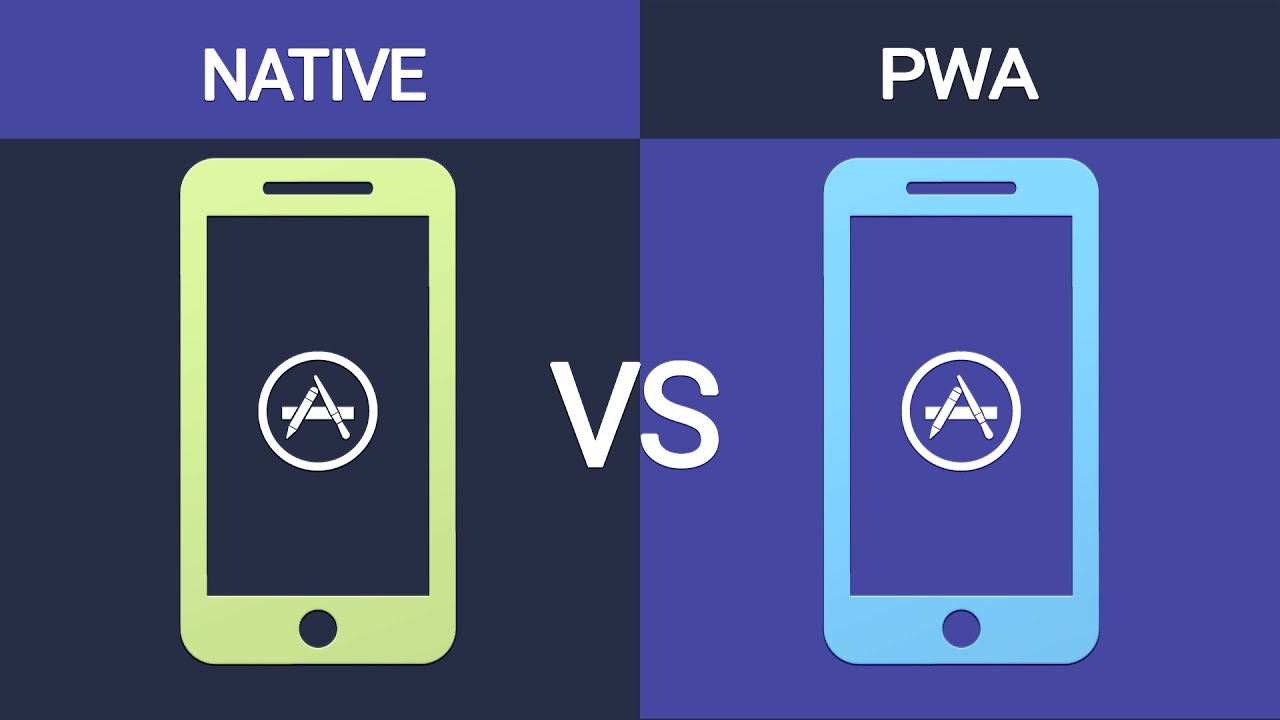
Mobile apps are a very big market. Nowadays practically everyone owns some kind of mobile device. Smartphones, tablets, or smartwatches have entered human daily life for good and it is hard to imagine life without them. Each device has certain applications. Currently, there is a lot of talk about native and PWA services. What are the differences and which are better for the user?
Table of Contents
What exactly is a PWA?
As previously said, these are progressive implementations that seek to ensure the best possible flexibility independent of the device’s operating system or the nature of the Internet connection. The aim is to make these apps as good as possible, regardless of the platform or location from which you interact. When you visit a PWA-enabled website, the content is stored in the memory of your browser, allowing the program to run more smoothly and allowing you to access the website without an internet connection (offline mode). If you want to learn more about PWA visit ASPER BROTHERS.
Advantages of PWA from the development point of view

img source: unsplash.com
Responsive models have many advantages that are recognized by developers. People involved in writing applications value their time above all. For this reason, the choice of PWA seems to be obvious. The advantage of this solution over native models is quite clear. First of all, there is no need to write a separate program for each platform, as one version is sufficient.
Moreover, working with progressive models is, above all, interesting and developmental. In this way, the developer can gain new opportunities and experience, which he will certainly use in his further career. It is also interesting to be able to work with headless architecture, which cannot be experienced with native models.
Speaking of advantages for developers, it is also worth mentioning that the application does not have to land in AppStore or Google Play. Thus, there is no need for a paid developer account, as the software is added from the website. Furthermore, such a solution can be implemented quite quickly.
PWA stands for Progressive Web Apps, and its key goal is to provide easy, quick access to information through the internet. Since mobile devices produce 51.3 percent of web traffic, stratifying the mobile consumer is critical to ensuring the success of every sector. PWA has innovative adaptability capabilities that can measure user curiosity and offer critical information at key points, resulting in increased traffic.
Sparing time for leisure activities has been difficult in today’s competitive environment. Time is a valuable commodity. Thousands of e-commerce websites are now serving customers as a result of this fact. Consider AliExpress, Flipkart, Alibaba, among others. They are the most popular e-commerce destination, with millions of customers worldwide.
Traditional webpages can’t handle such a huge amount of user queries, resulting in a super slow loading website. However, with the aid of PWA, you can increase page loading time and ensure full client satisfaction. Though there are numerous reasons why PWA is regarded as the future of e-commerce and the marketplace, we will focus on the most important ones.
PWA advantages from the point of view of the application user
Progressive applications are a very convenient solution for every user. Why is that? First of all, their installation is child’s play and it is possible to use the solutions offline. In this way, their functionality is much higher than native applications. It is worth mentioning that the loading time of pages using progressive applications is very short, which gives the user almost immediate access to information. The size of the models themselves is usually not large, so the amount of memory used is also small. The programs are updated instantly and there is no need to download them from the Google or Apple shop. The advantages of progressive apps are many, but native apps should still not be forgotten.
What are the advantages of native apps?

img source: kinstacdn.com
Native solutions are programmed for a specific platform. Consequently, better optimization for a given component can be achieved. Such an application must be written in a dedicated language and can use all the functions of a mobile device, such as a GPS camera or fingerprint reader. This allows making a product that is perfectly suited to the technology. It allows for customer account connectivity and data synchronization. Native models allow for better communication between the application and the device. In terms of programming, native applications allow you to reach users via individual sales platforms, which cannot be done with PWAs. Thus, they seem to offer much better earning opportunities for developers.
In summary, the advantages and disadvantages of native applications
Benefits:
- Improved offline performance as a result of simpler code
- Support for system APIs means more options.
- Each platform’s UI components are exclusive, which improves usability.
- Access to appropriate hardware makes bug prevention simpler.
- Due to the availability of designs for each platform, screen size is irrelevant.
- There is no need to focus on free and open-source libraries.
The disadvantages:

img source: aberdeen.com
- If you need a native program for several applications, the project would take longer and be more costly.
- Adding new functionality necessitates their implementation in each codebase separately.
- Native programming languages necessitate a larger team of specialists in various fields.
In conclusion, each solution has its advantages and disadvantages. For this reason, it is advisable to think carefully about what the designed product should look like and who the end-user will be. Based on these data, you can prepare an application that will quickly penetrate the market. The choice of whether it is to be a progressive or native application must be made at the beginning of the work, so as not to waste time and resources.







